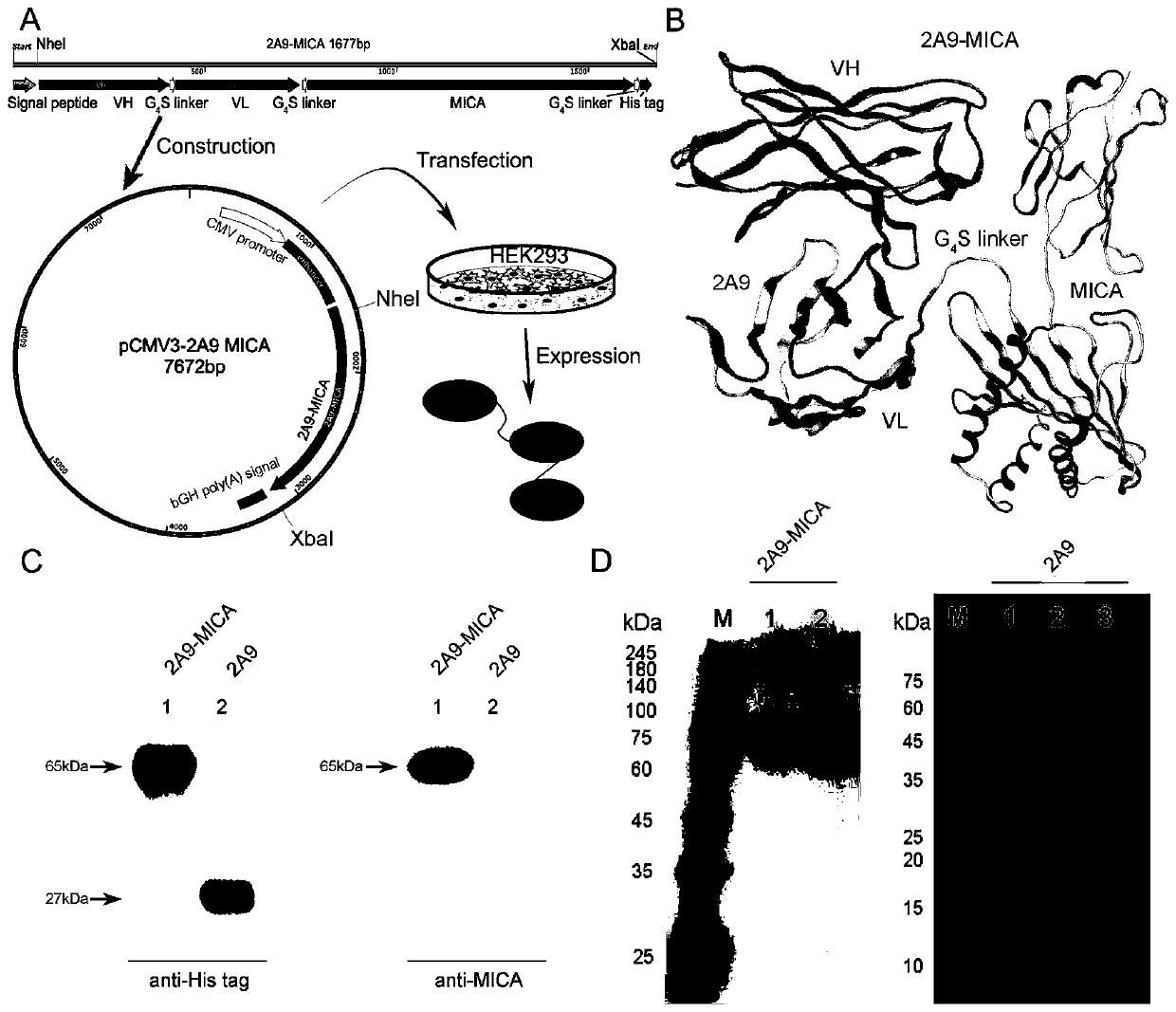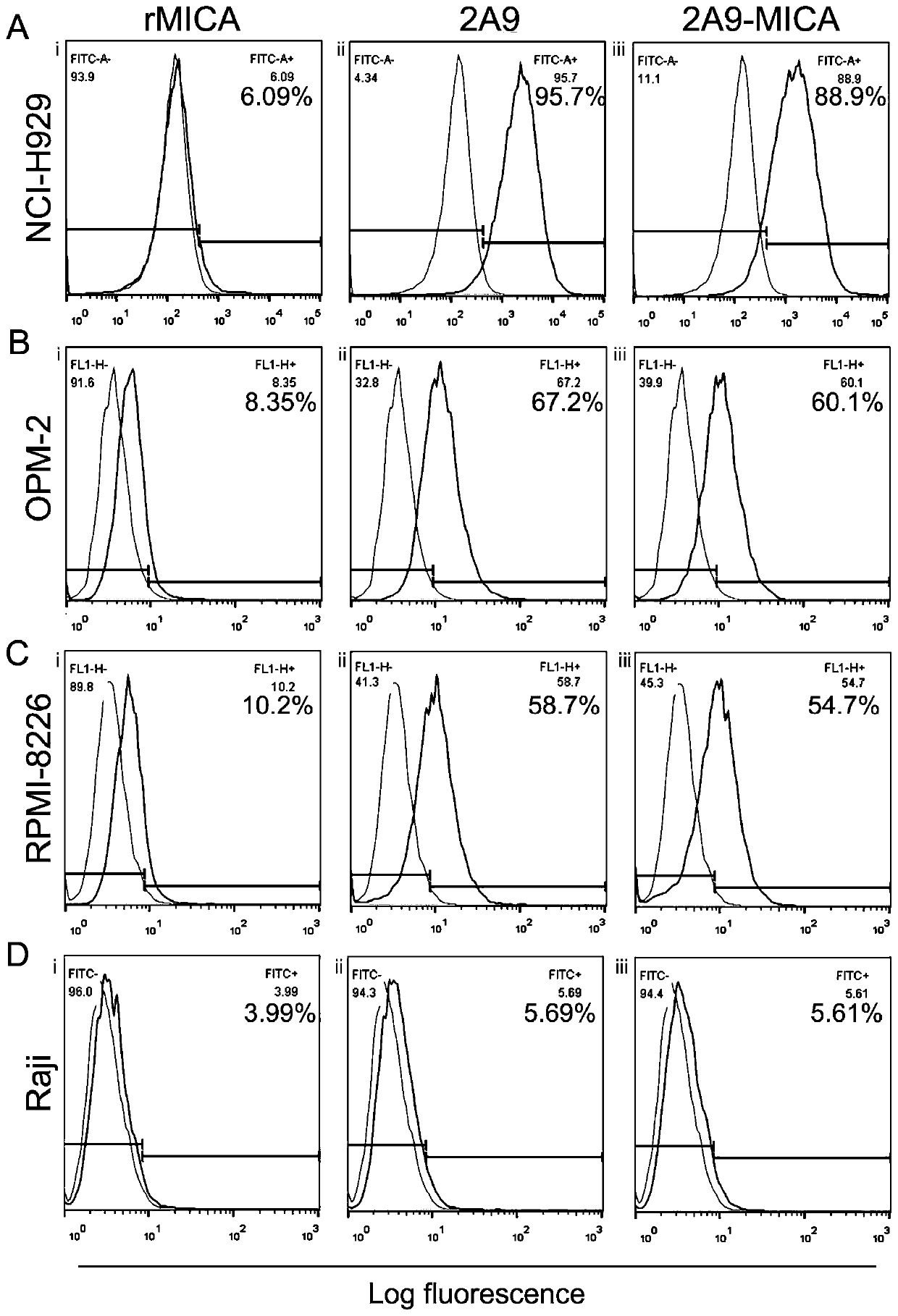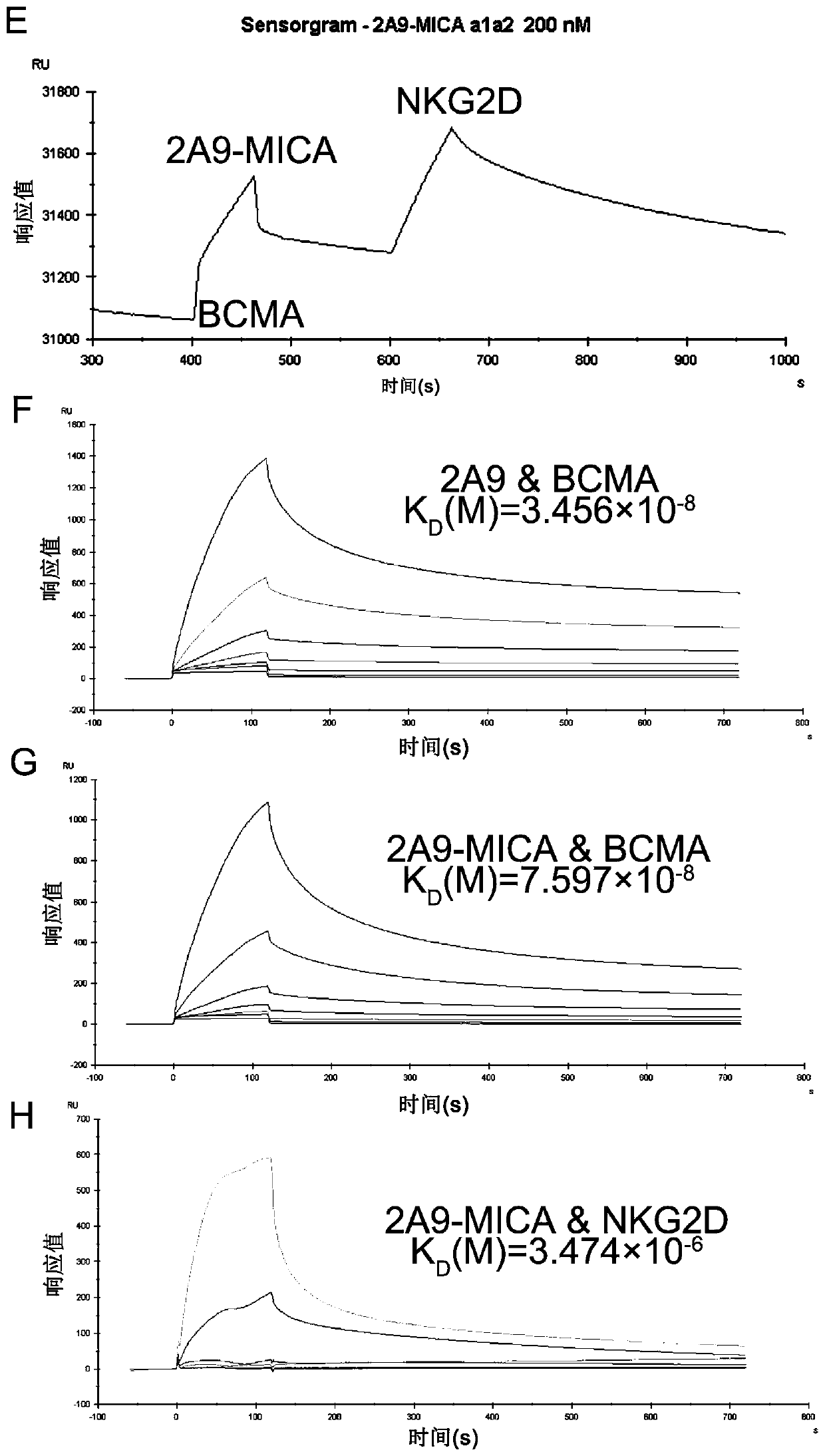Preparation of bispecific antibody targeting human BCMA and activating NK cells and application of bispecific antibody
A bispecific antibody and NK cell technology, applied in the fields of application, antibody, and specific peptide, can solve the problems of immune escape and inability to activate immune cells, and achieve obvious effects, high affinity, and obvious cell growth effects
- Summary
- Abstract
- Description
- Claims
- Application Information
AI Technical Summary
Benefits of technology
Problems solved by technology
Method used
Image
Examples
Embodiment 1
[0037] Example 1: Construction of bispecific antibody 2A9-MICA
[0038] Using overlap PCR technology through flexible peptide G 4 S was used for gene splicing and enzyme cleavage sites were added at both ends. The PCR product was detected by 1% agarose gel electrophoresis, and the target gene fragment was recovered with the agarose gel recovery kit. The target gene and pCMV3 were double-digested separately, and the target gene and plasmid fragments were recovered after digestion. T4 ligase was ligated overnight at 16°C to obtain recombinant plasmid pCMV3-2A9 MICA. CaCl 2 The ligation product was transformed into Escherichia coli DH5α for amplification and storage. The result is as figure 1 As shown in A.
Embodiment 2
[0039] Example 2: Expression and purification of bispecific antibody 2A9-MICA
[0040] First, the recombinant plasmid pCMV3-2A9 MICA was transfected into HEK293 cells with PEI transfection reagent, the medium was changed the next day and the cells were passaged, and the scale of cell fermentation culture was gradually expanded, the cell culture medium was collected, and the samples were filtered through a 0.22 μm filter membrane Purify by Histrap affinity chromatography, and finally obtain a large amount of the target protein. The expressed 2A9-MICA protein structure mimics as figure 1 Shown in B. The detailed steps of purification are as follows: first wash the Histrap column with double distilled water for 10 minutes, then equilibrate the column with BindingBuffer for 10 minutes, and the flow rate of washing is 1ml / min. Next, put the crude single-chain antibody protein solution on the column, and control the flow rate to be half of the washing flow rate. Collect the efflu...
Embodiment 3
[0041] Example 3: Detection of binding ability of 2A9-MICA to various tumor cell lines by flow cytometry
[0042] In this experiment, 2×10 5 NCI-H929, OPM-2, RPMI-8226 and Raji cells were resuspended in 250 μl PBS to prepare single cell suspension. Then, an equal volume concentration of 500 nM 2A9-MICA was added to each cell suspension for co-incubation for 1 h. After washing with PBS to remove unbound rG7S-MICA, the tumor cells were incubated with FITC-labeled anti-his mAb. After washing with PBS, the fusion protein bound to the cell surface was detected by flow cytometry, and the 2A9-MICA sensitive type was screened. Tumor cell lines. The result is as figure 2 shown in A-2D.
PUM
 Login to View More
Login to View More Abstract
Description
Claims
Application Information
 Login to View More
Login to View More - R&D
- Intellectual Property
- Life Sciences
- Materials
- Tech Scout
- Unparalleled Data Quality
- Higher Quality Content
- 60% Fewer Hallucinations
Browse by: Latest US Patents, China's latest patents, Technical Efficacy Thesaurus, Application Domain, Technology Topic, Popular Technical Reports.
© 2025 PatSnap. All rights reserved.Legal|Privacy policy|Modern Slavery Act Transparency Statement|Sitemap|About US| Contact US: help@patsnap.com



